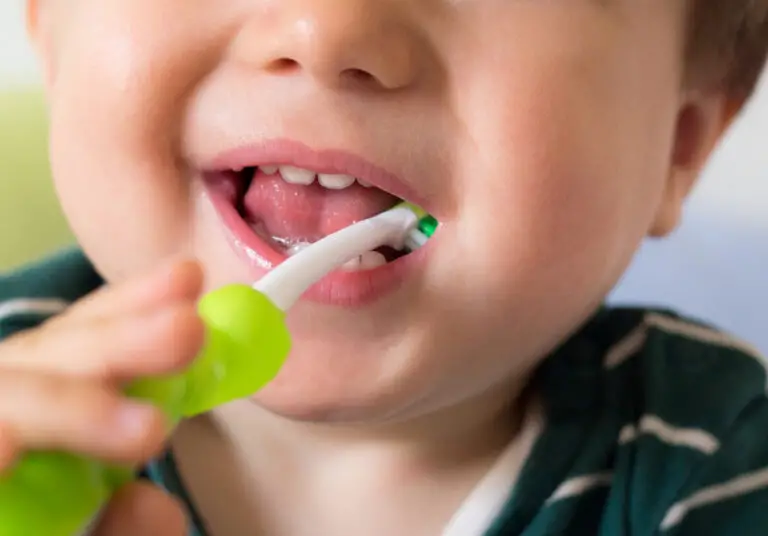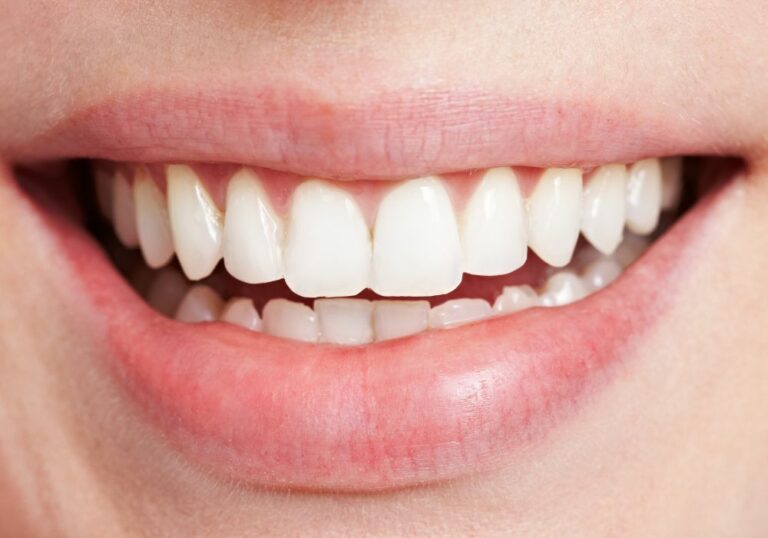A deviated septum is a relatively common structural abnormality, occurring in over 30% of people, where the wall between the left and right nasal passages becomes displaced from the center. This crooked septum can obstruct airflow through the nasal cavities and lead to breathing impairments.
In addition to nasal and respiratory symptoms, there is evidence that a deviated septum may also contribute to dental problems, including tooth pain and sensitivity. This article will provide an in-depth overview of how a deviated septum can impact dental health, the mechanisms involved, how dentists evaluate and diagnose associated tooth pain, and whether treatments like septoplasty surgery may help resolve dental symptoms related to nasal obstruction.
Anatomy of the nasal septum

The nasal septum refers to the wall of bone and cartilage that runs down the center inside the nose, separating the left and right air passages. This important structure plays several key roles:
- Separates the nostrils
- Supports and provides stability to the nose
- Regulates airflow between nostrils
- Houses thin blood vessels that help warm and humidify incoming air
The upper portion of the septum near the bridge of the nose consists of quadrangular cartilage capped with periosteum membrane on each side. The lower septum contains the vomer bone and perpendicular plate of the ethmoid bone.
Normally, the septum runs relatively straight down the midline. But it can become deviated during development or after injury. Let’s look closer at what causes the septum to shift off-center.
Causes of a deviated septum
A deviated septum occurs when the nasal septum becomes displaced to one side rather than running straight down the center of the nose. There are two categories of causes:
1. Congenital causes
A deviated septum can arise congenitally due to errors during fetal development in utero. Contributing factors may include:
- Genetics: Family traits or cartilage disorders passed down genetically.
- Maternal smoking or alcohol use during pregnancy negatively impacts development.
- Poor nutrition deficient in key vitamins and minerals.
- Hormonal influences from maternal or placental hormones.
- Birth trauma from pressure on the nose during vaginal delivery.
In these cases, the nasal septum fails to form properly and is deviated at birth. This congenital structural deviation tends to worsen with growth during childhood.
2. Acquired causes
People born with a straight septum can later develop deviation due to external injury or trauma to the nose:
- Sports injuries: Getting hit in the face with a ball or taking a bad fall. Rugby, hockey, basketball, and boxing carry high risks.
- Accidents: Motor vehicle crashes where the face/nose slam into the steering wheel or window.
- Physical violence: Punches to the nose or face can fracture or displace the septum.
- Past surgeries: Prior rhinoplasty or nasal/sinus surgeries may alter internal anatomy.
- Chronic irritants: Repeated snorting of cocaine or other drugs can damage nasal structures.
Even minor trauma that doesn’t visibly deform the external nose can still shift the delicate internal septum enough to obstruct airflow.
Deviated septum symptoms

In milder cases, a slightly deviated septum may cause no issues at all. But more severe deviation commonly leads to the following impairments:
- Nasal congestion: The crooked septum narrows one or both nasal passages, obstructing airflow. Congestion is usually worse on the side the septum deviates towards.
- Difficulty breathing: The decreased space for airflow makes breathing through the nose more difficult, especially when lying down.
- Noisy breathing: Congestion causes audible breathing sounds during sleep. Loud snoring or sleep apnea may occur.
- Frequent nosebleeds: The curved septum creates turbulence during breathing that dries out and irritates the nasal lining, causing it to crack and bleed.
- Facial pain: Chronic nasal congestion and pressure can cause headaches or facial pain.
- Increased sinus infections: Poor drainage from blocked sinus ostia may increase recurrent sinusitis risk.
- Sleep disturbances: Besides snoring, congestion and difficulty breathing through the nose disrupts sleep quality.
Let’s now explore how these nasal airway issues from a deviated septum may possibly impact dental health and lead to tooth pain.
Can a deviated septum cause tooth pain?
There are several ways a significantly deviated septum can negatively affect dental health and potentially contribute to tooth pain and sensitivity:
1. Chronic mouth breathing
The primary way a crooked septum influences dental health is by causing chronic mouth breathing during the day and night. With the nasal airway obstructed, people habitually breathe through their mouth instead.
This long term open-mouth posture can lead to dental complications like:
- Malocclusion: The constant downward airflow pushes the tongue down and forward. This allows the teeth to shift and become misaligned.
- Tooth crowding and rotation: The imbalance of pressures inside the mouth cause the teeth to crowd and rotate. This is especially true with the back molars.
- Braces relapse: After orthodontic treatment, the teeth quickly relapse back to a crooked position without the tongue properly positioned against the palate.
- TMJ disorders: The misaligned bite puts strain on the temporomandibular joint, leading to pain and dysfunction. Jaw growth may also become asymmetrical.
- Bruxism: Many mouth breathers grind their teeth intensely at night. This wears down and damages tooth enamel.
So the chronic mouth breathing habit allows dental misalignment, instability, and damage over time. Patients may then experience tooth sensitivity, loose teeth, or dental pain from issues like TMJ disorders or severe bruxism.
2. Sinus pressure on upper teeth
With the nasal passages obstructed, mucus drainage from the sinuses becomes impaired. This causes sinus congestion, inflammation, and resulting pressure symptoms.
The maxillary sinuses sit in the upper jaw, just above the upper back teeth. When congested and swollen, these sinuses can press down on the crowns of the upper molars. This pressure on the periodontal ligament leads to dental hypersensitivity and pain, especially with hot or cold stimuli.
3. Referred trigeminal nerve pain
Some researchers hypothesize the deviated septum may also contribute to tooth pain through irritation of the trigeminal nerve.
The trigeminal nerve supplies sensation to the face and mouth region. It has three main branches:
- Ophthalmic (V1): Sensory to the eyes, forehead, scalp
- Maxillary (V2): Sensory to the maxilla bone, upper jaw, cheeks, nasal cavity, upper teeth
- Mandibular (V3): Sensory to the mandible, lower teeth, tongue, lower lip
One theory suggests that compression or inflammation of the nasal branches of the maxillary nerve (V2) from the deviated septum may refer pain signals that are perceived as dental pain in the upper teeth. More studies are needed to fully validate this idea of referred trigeminal dental pain. But it remains a possibility.
Diagnosing dental issues related to deviated septum

If a patient complains of tooth pain or sensitivity along with nasal obstruction, how should a dentist evaluate whether a deviated septum may be contributing to the dental symptoms?
Here are some key steps in the diagnostic process:
History and clinical examination
- Ask about nasal obstruction, breathing issues, congestion, snoring, sleep apnea, sinus pressure. This helps identify signs of a deviated septum.
- Check for an open bite, narrow palate, dental crowding, misalignment, or malocclusion indicating chronic mouth breathing.
- Look for patterns of severe tooth wear like erosion or cupping that suggest tooth grinding/bruxism.
- Assess teeth, jaw, TMJs for pain, clicking, or dysfunction.
- Palpate facial sinuses for signs of swelling or tenderness.
Imaging studies
- Order a panoramic dental x-ray to visualize all the teeth and jaws. Check for issues like impacted wisdom teeth, cysts, or bone loss.
- May order maxillofacial CBCT scan for 3D view of bone anatomy and sinuses.
- Sinus CT scans help diagnose sinus inflammation if sinus congestion is suspected.
Referral and collaboration
- Refer patient to an ENT for nasal endoscopy. This directly examines the nasal anatomy and severity of the deviated septum.
- ENT can check for related issues like nasal polyps, enlarged turbinates, sinusitis.
- Collaborate with ENT and sleep doctors for sleep studies if sleep apnea is suspected.
Key signs suggesting deviated septum-related dental issues:
- Crowded, misaligned teeth indicating chronic mouth breathing
- Bruxism patterns – severe tooth wear, enamel damage
- TMJ dysfunction – tightness, clicking, pain with jaw movement
- Upper molar sensitivity and pain from sinus pressure
- Bad breath, snoring, sleep apnea markers
So a thorough history, clinical dental exam, imaging, and collaborating with ENT specialists are key to accurately diagnosing if a deviated septum may be negatively impacting dental health.
Can surgery help with dental problems from deviated septum?

If a deviated septum is determined to be contributing to dental issues, can surgery to correct it help resolve tooth pain and misalignment problems?
Septoplasty surgery
The standard surgery to realign and straighten the nasal septum is called septoplasty. It involves an incision inside the nose to access the septum. Then the crooked portions are repositioned, removed, or straightened. Any spare cartilage can be used for grafts. Splints help hold the repaired septum in place during initial healing.
Potential benefits for dental issues:
- Opens nasal airflow: Corrects nasal breathing and helps normalize sleep. This reduces chronic mouth breathing over time.
- Relieves sinus pressure: Restores drainage pathways from sinuses to nasal cavity. Lessens compression on upper teeth.
- Decompresses nerves: Releases pressure on branches of trigeminal nerve that may refer pain to teeth.
- Prevents further dental damage: With improved nasal breathing, allows teeth to stabilize into better alignment. Halts progression of bruxism, TMJ disorders, and progressive bite instability.
Limitations and risks:
However, septoplasty has its limitations when it comes to treating pre-existing dental problems:
- No teeth realignment: The surgery itself does not physically move or straighten already misaligned teeth. Orthodontic braces are still needed for this.
- Pre-existing dental damage: Issues like enamel erosion from bruxism do not get restored. Restorative dental treatments are still required.
- Risks of surgery: Septoplasty poses risks like persistent bleeding, infection, septal perforation. Functional problems can potentially worsen after surgery.
- Slow benefits: It takes months of proper tongue posture for teeth to slowly realign once nasal breathing is restored. Rapid benefits should not be expected.
So while septoplasty can curtail further dental deterioration by correcting nasal obstruction, most patients still require additional orthodontic and dental treatments to fully resolve deviated septum-related dental issues that developed prior to septal correction surgery.
Prevention tips
For milder cases of deviated septum, surgery may not be required initially. Here are some conservative methods to help prevent dental problems from worsening:
- Nasal strips at night to open nasal airflow during sleep when congestion worsens
- Nasal saline rinses to keep nasal passages moist and clear of mucus
- Humidifier to prevent excess nasal dryness and swelling
- Oral appliances to train proper tongue posture against the palate
- CPAP machine if sleep apnea is present to ensure adequate overnight oxygenation
- Avoid smoking or irritants that exacerbate nasal inflammation
- ** ENT evaluation** regarding septoplasty if nasal obstruction is severe and problematic
- Regular dental cleanings and checkups to monitor for signs of emerging bruxism, TMJ dysfunction, or bite instability issues
While simple interventions may help minimize dental complications from a deviated septum, septoplasty is often ultimately required for substantial improvement in more severe obstructive cases.
Conclusion
A significantly deviated nasal septum can impair dental health through chronic mouth breathing, sinus pressure, and potential trigeminal nerve pain referral. This leads to issues like dental misalignment, bruxism, TMJ disorders, and upper molar sensitivity. A thorough diagnostic workup including both dental and ENT evaluation is important to identify if a deviated septum is involved. While septoplasty surgery can help open nasal breathing and prevent further dental deterioration, orthodontics and dental treatments are still generally required to fully resolve pre-existing tooth pain and misalignment caused by long term nasal obstruction. Addressing the deviated septum is an important part of comprehensive treatment for associated dental complications.







